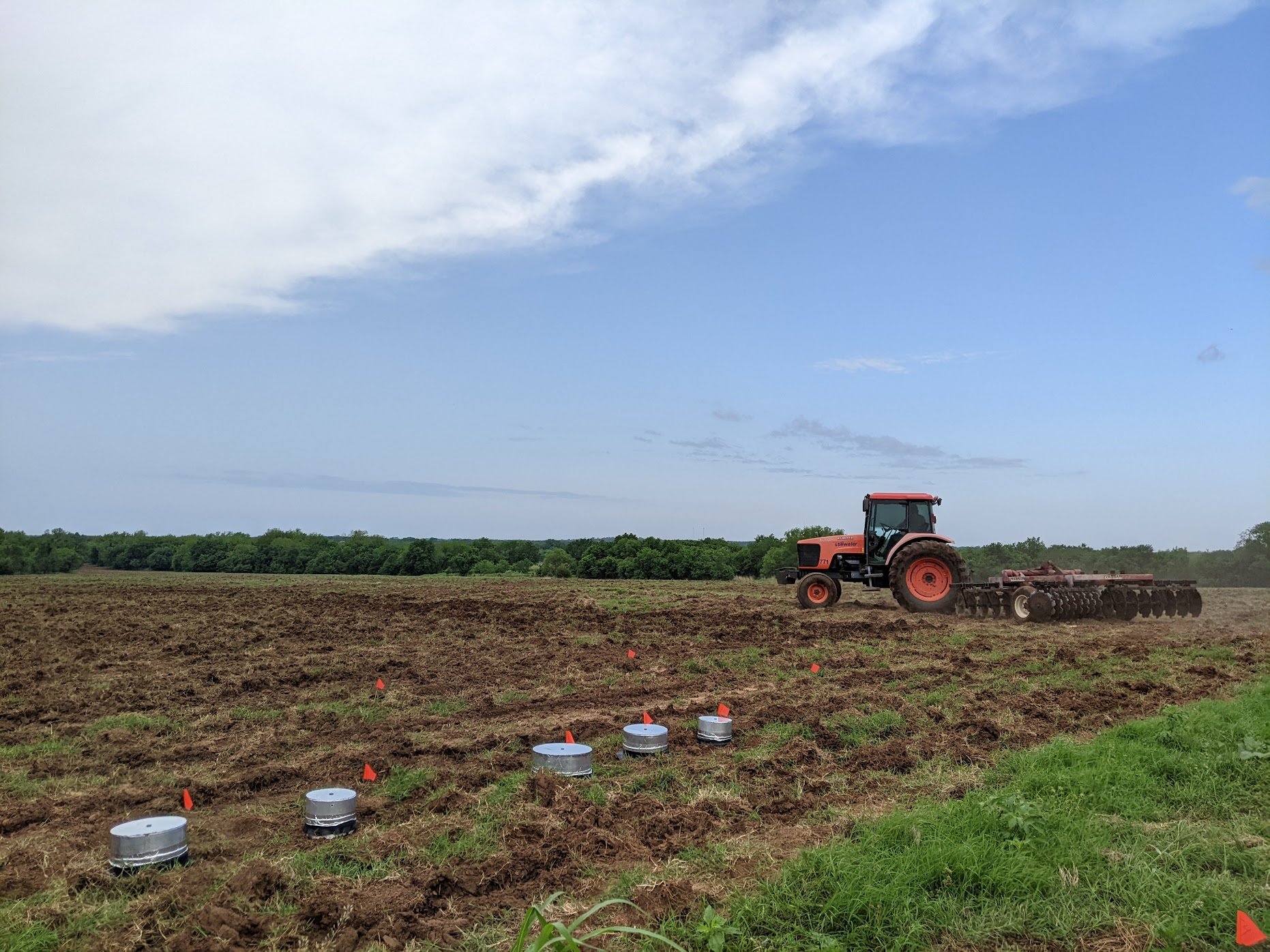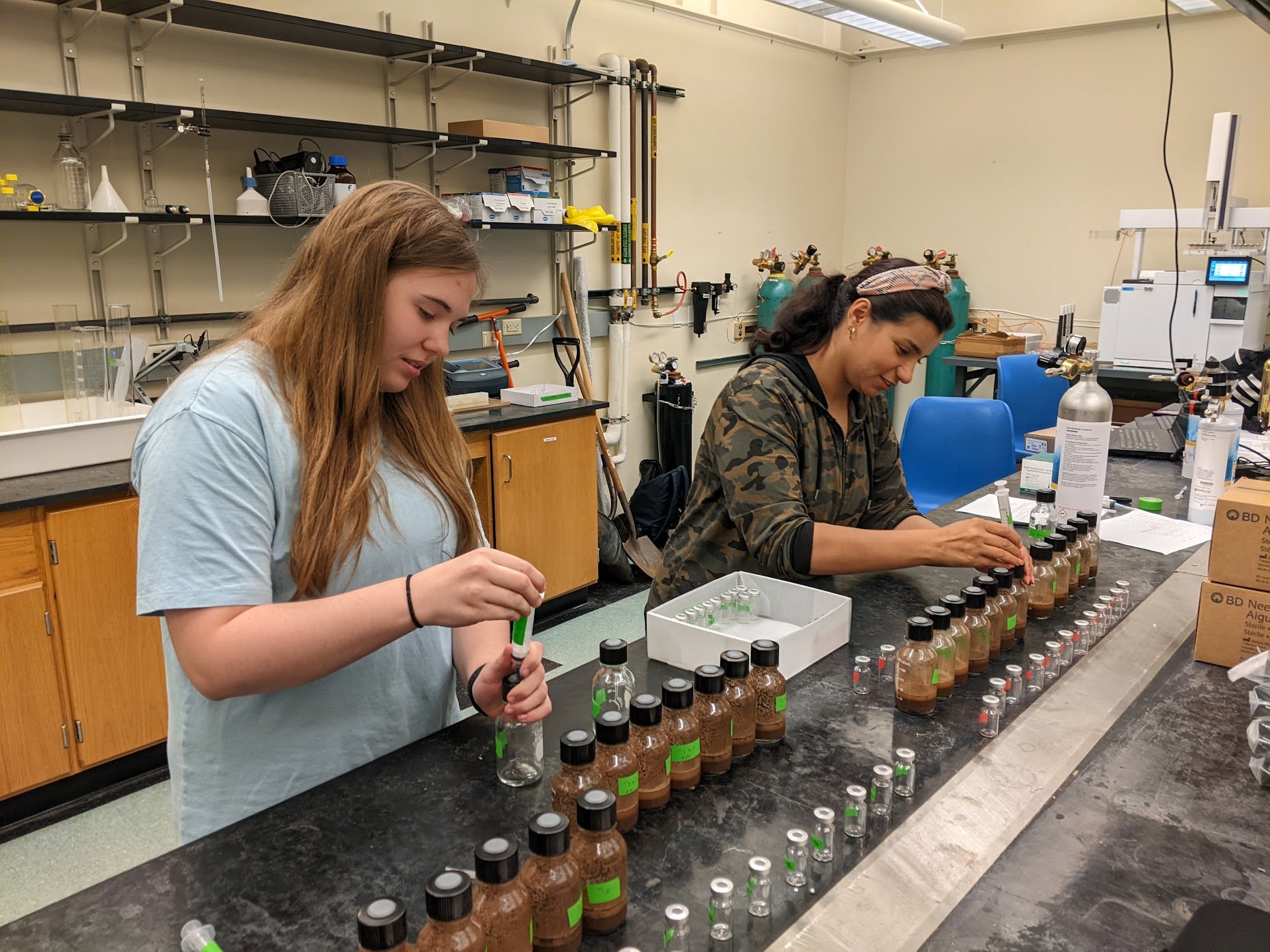Biosolids Land Application
This project aimed to understand how biosolids land application will influence soil nutrient cycling, greenhouse gas emissions, and sustainability. The Stillwater Wastewater Treatment Plant is land applying biosolids derived from their treatment system to fertilize crops they later harvest and distribute as cattle feed. We are considering how these biosolids may enhance or inhibit nutrient cycling processes (i.e., denitrification) and greenhouse gas emissions. We also are exploring how life cycle emissions compare between this practice and potential alternatives. The team utilizes a combination of field, lab, and modeling approaches to answer different research questions under this project umbrella.
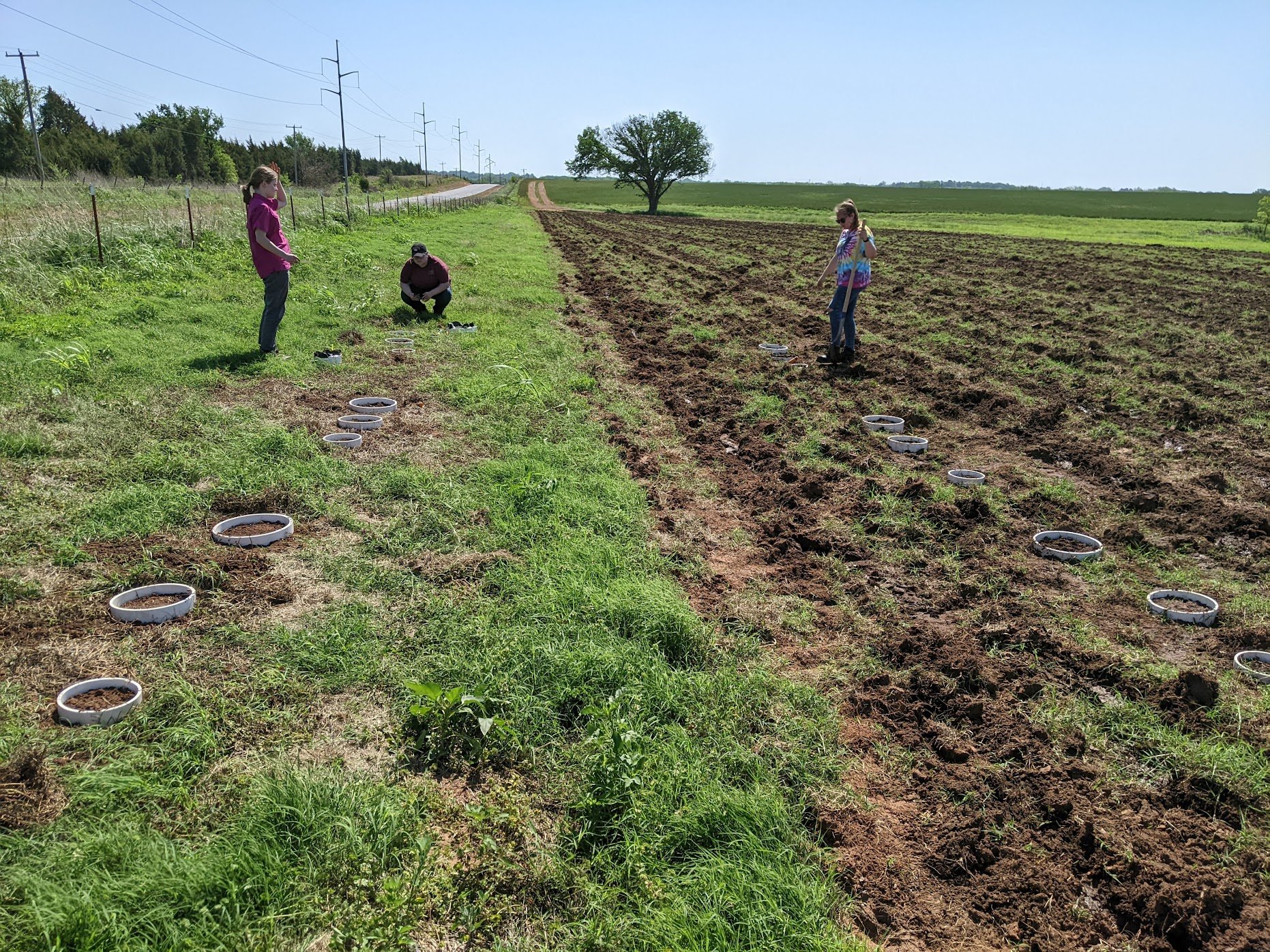
Shelby, Lizzie, and Madi setting up field experiment
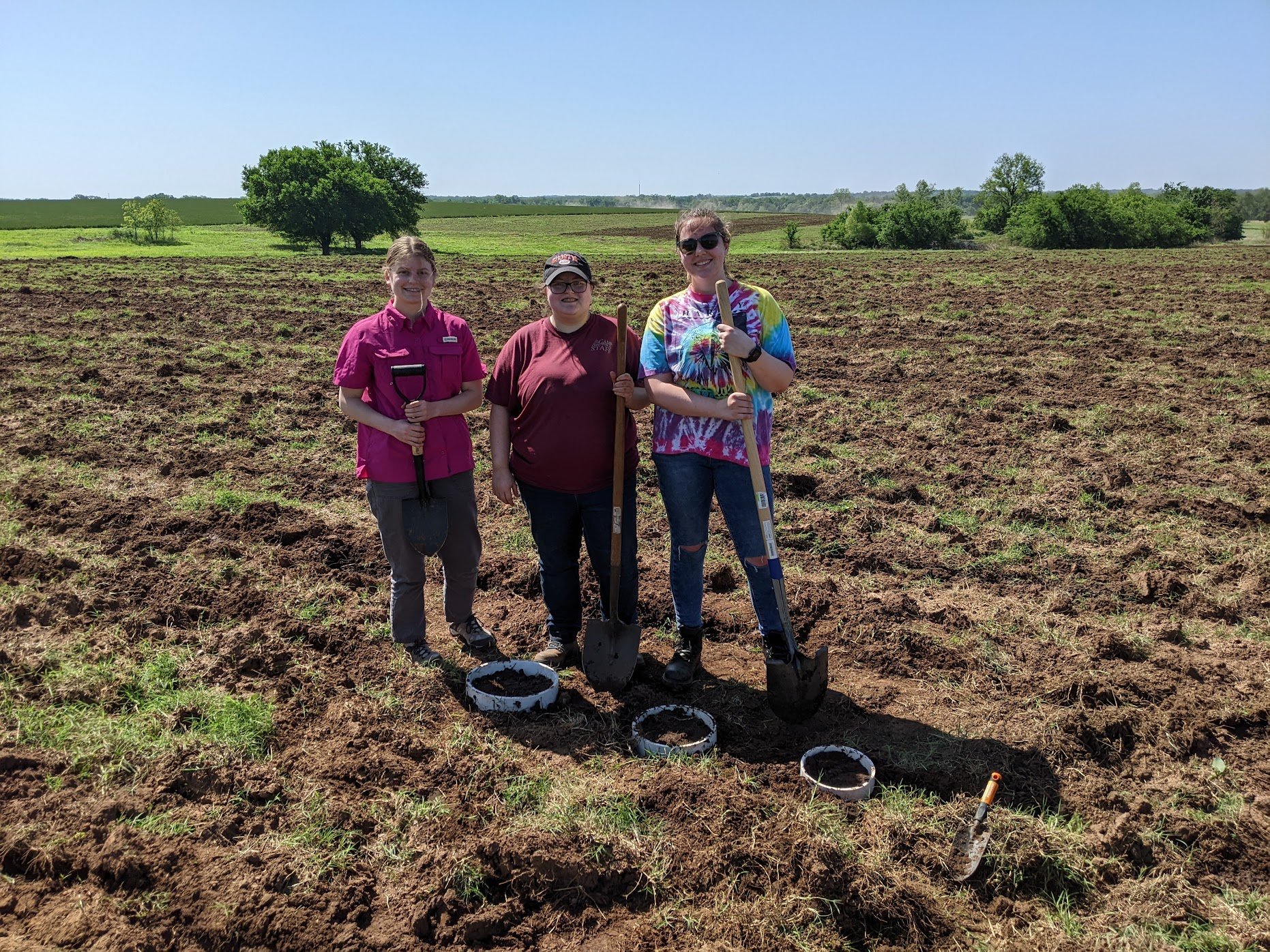
Successful day installing gas chamber bases with Shelby, Lizzie, and Madi
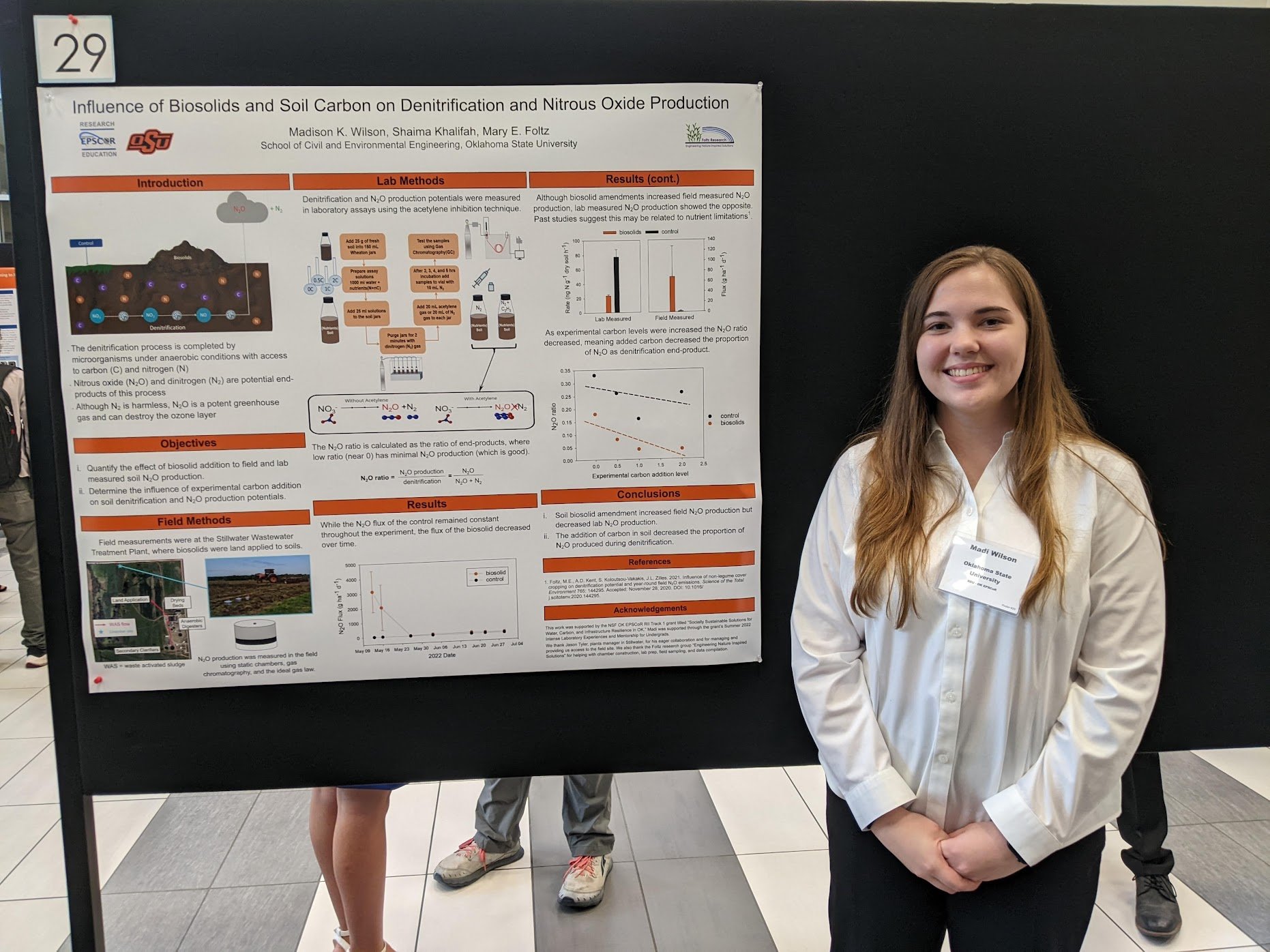
Madi's first poster presentation at the Summer Undergraduate Research Expo 2022
Plastic Biodegradation
The overall aim of this project was to quantify the biodegradation of two different bioplastics, PLA and PHA, through measurement of carbon dioxide emissions, which indicates microbial degradation of the plastic into carbon dioxide and water. This project considers natural biodegradability in different aquatic ecosystems: lake, river, and ocean. We also applied Life Cycle Assessment to compare the overall environmental sustainability of bioplastics compared to traditional plastics with an emphasis on end-of-life waste management.
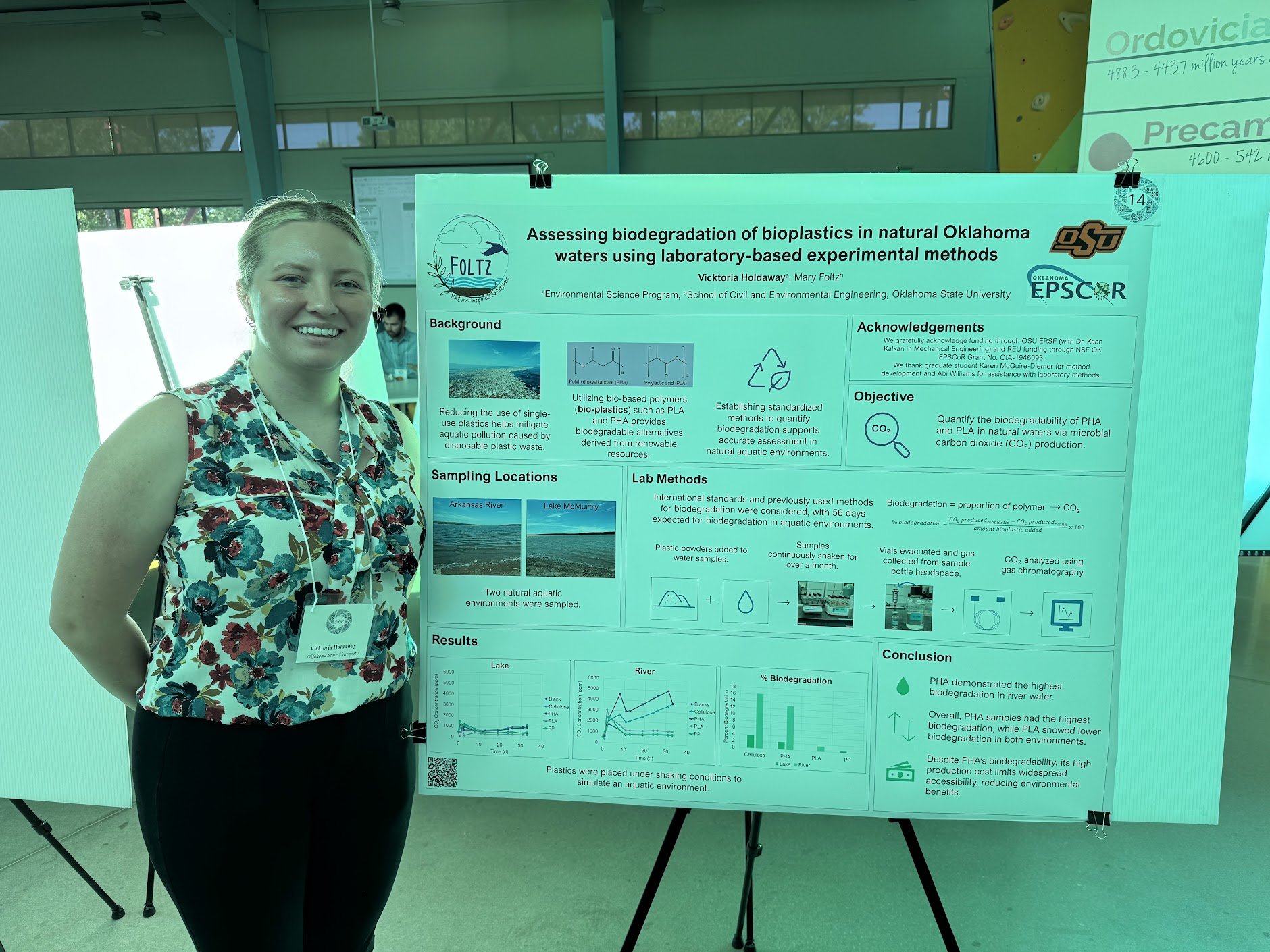
Vicktoria ends this project strong with her final poster presentation on her EPSCoR REU at the OK NSF EPSCoR Annual Meeting 2025.
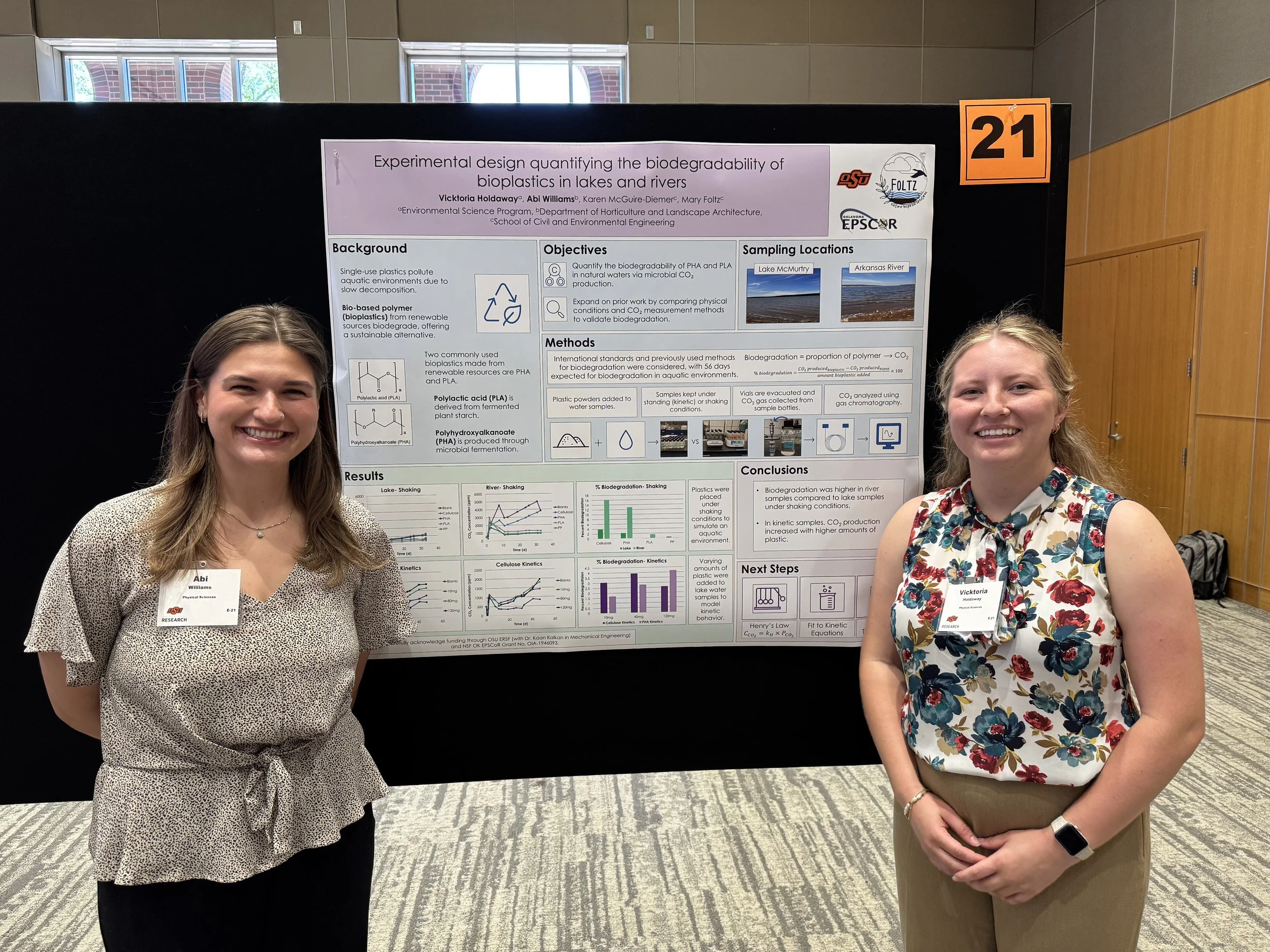
Abi and Vicktoria's poster at OSU Undergraduate Research Symposium 2025
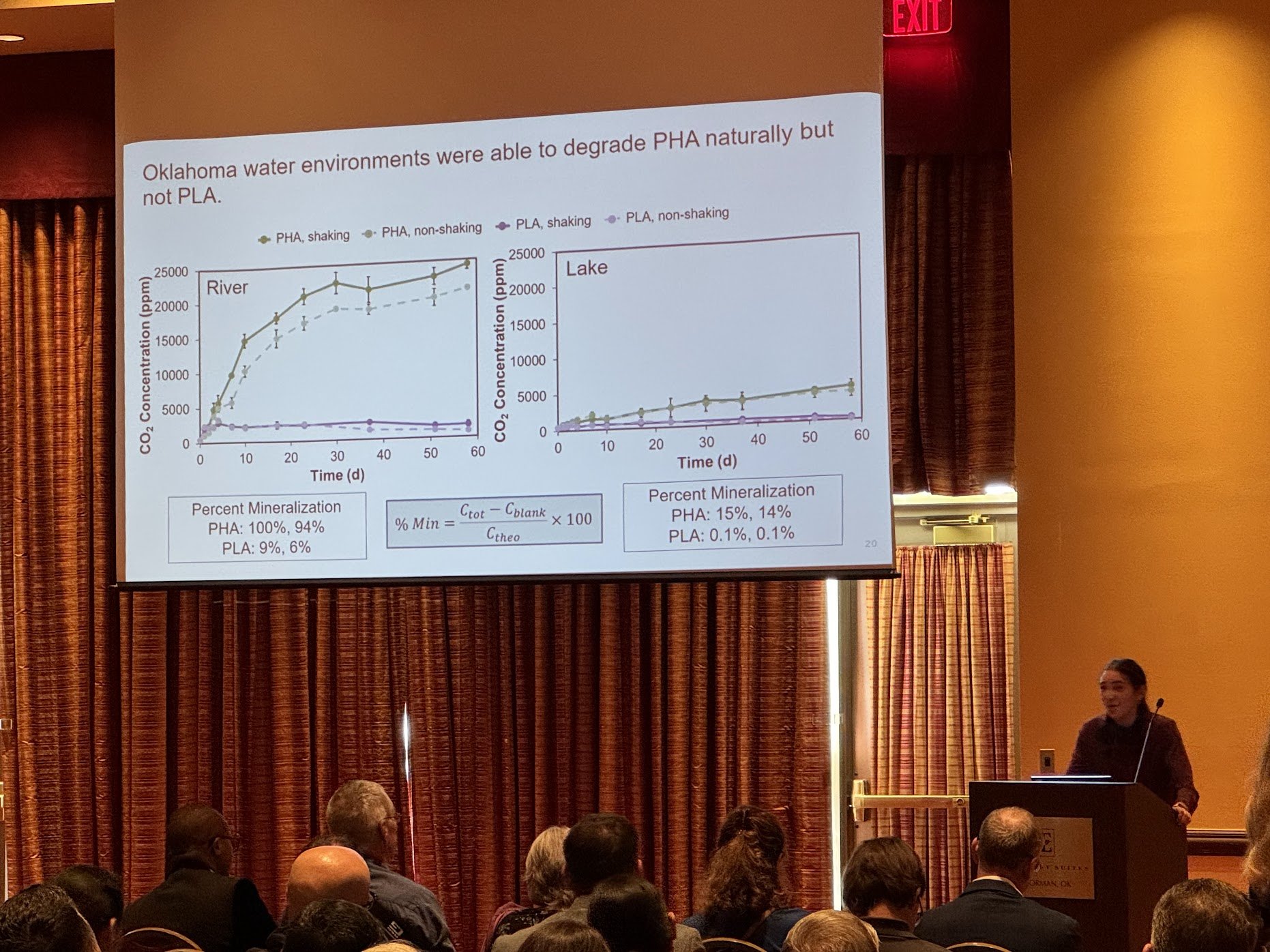
Karen's oral presentation at OK Governor's Water Conference 2024
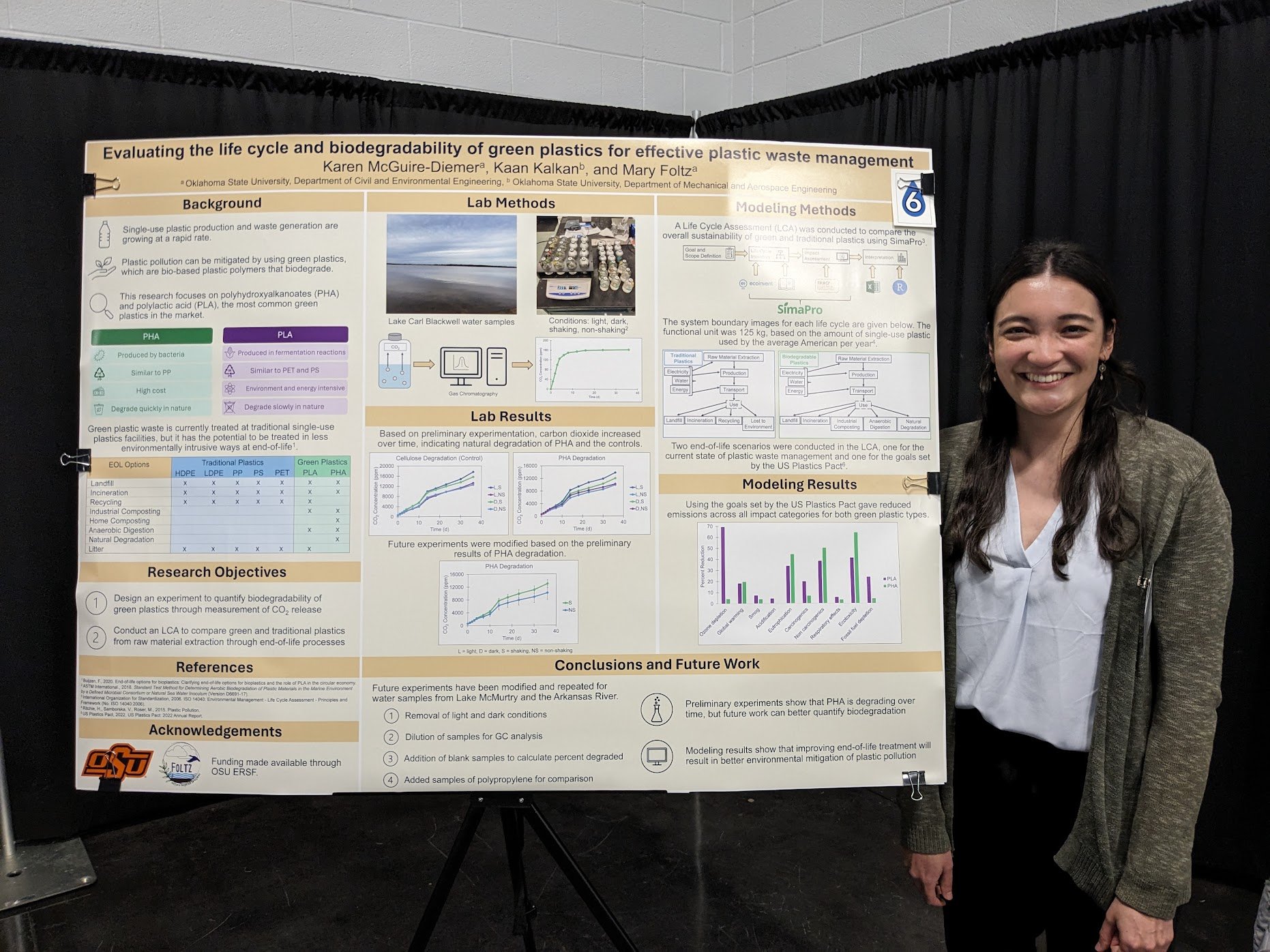
Karen's first poster presentation at OCWLA 2024
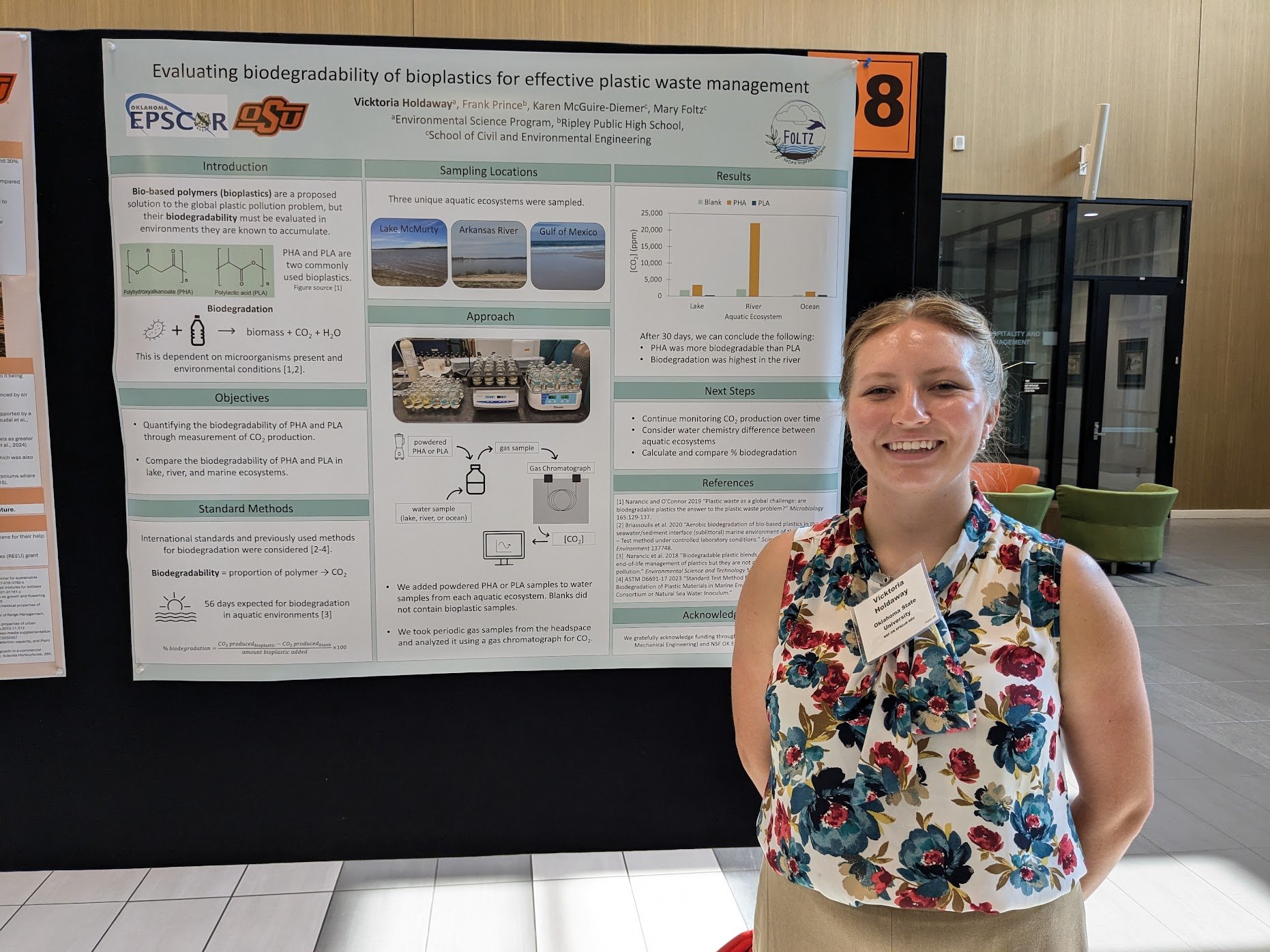
Vicktoria's first poster presentation at the Summer Undergraduate Research Expo 2024
Denitrification in Soils
We measured denitrification and nitrous oxide (N2O) production from soils in lab assays. We often measured baseline soil denitrification and then assessed how nutrient or soil amendments and/or environmental conditions influenced denitrification and N2O production rates. Some focus areas our group has investigated include pH, texture, nutrients, trace metals, and soil origin. Understanding the factors that influence denitrification and nitrous oxide production can ensure nitrogen is used most efficiently in soils and not lost to the atmosphere as the harmful greenhouse gas N2O.
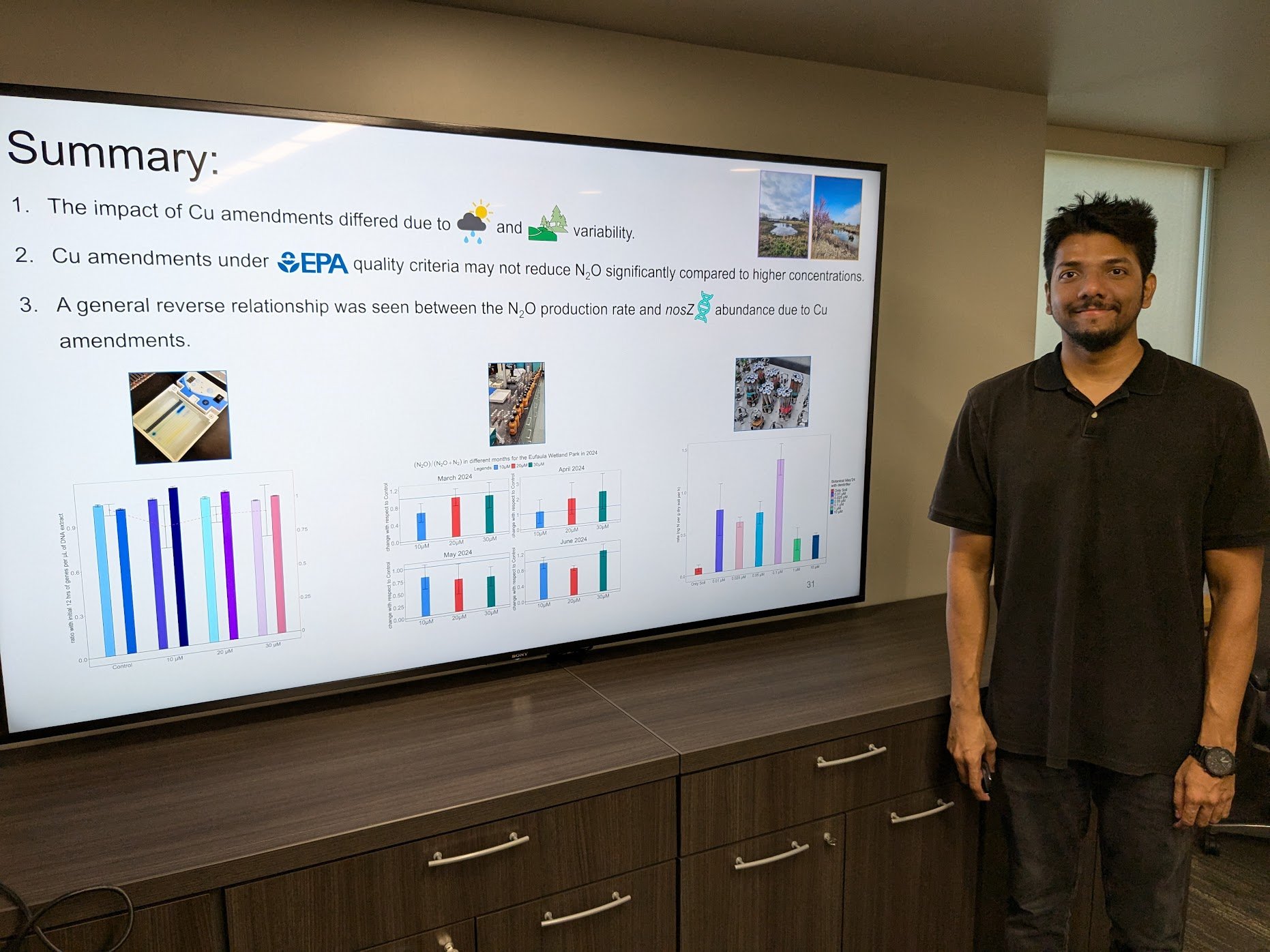
Kolpo's thesis defense 2024
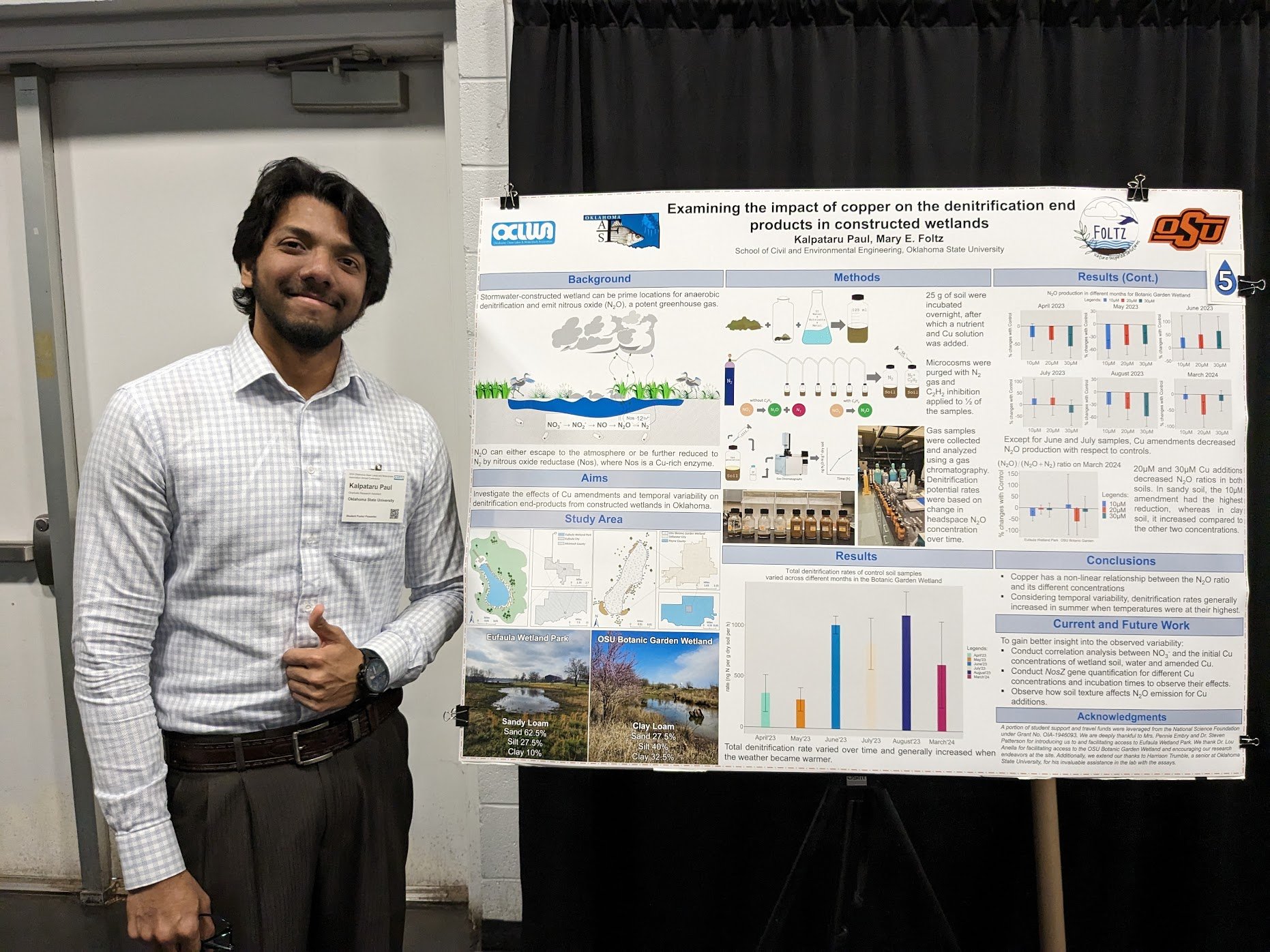
Kolpo's first poster presentation at EPSCoR 2024
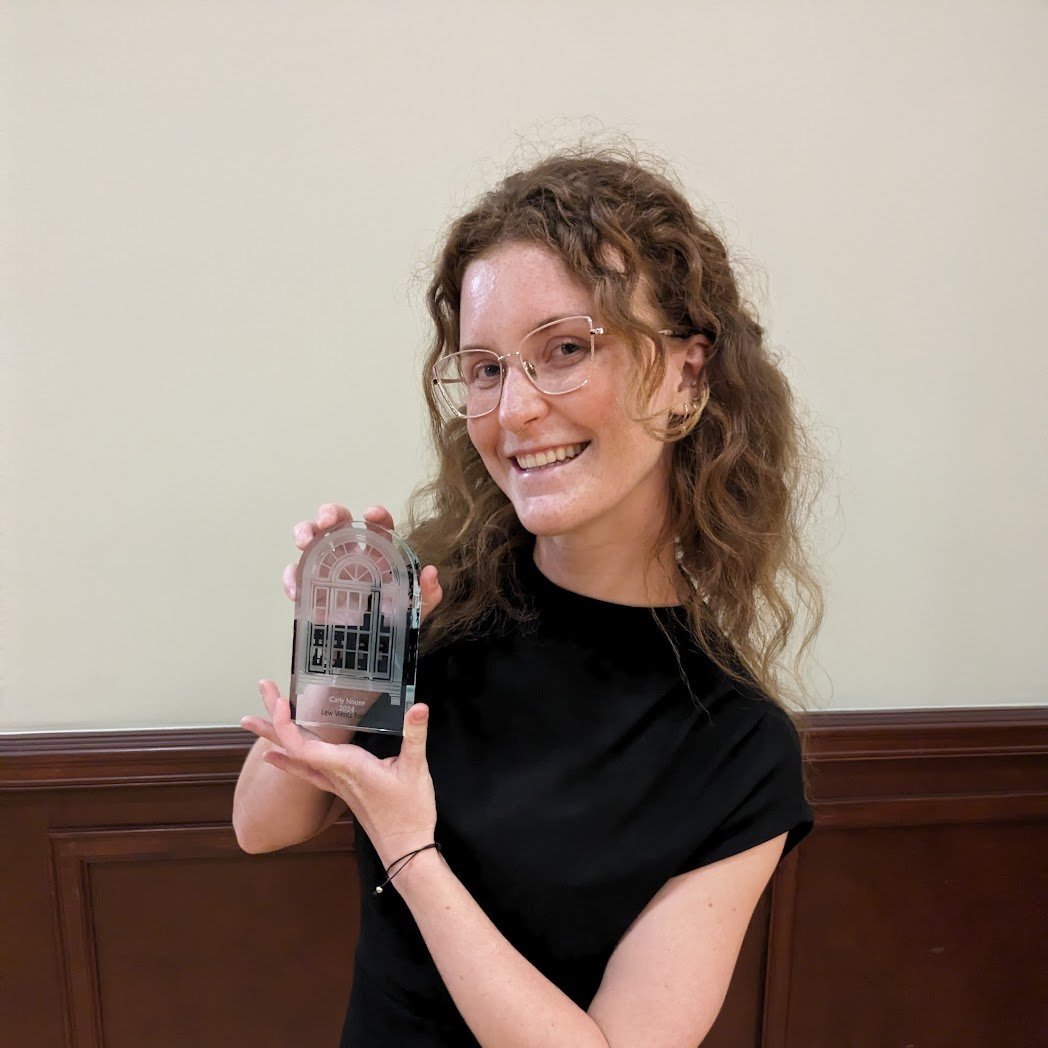
Carly was a Wentz Scholar this year (2023-24)
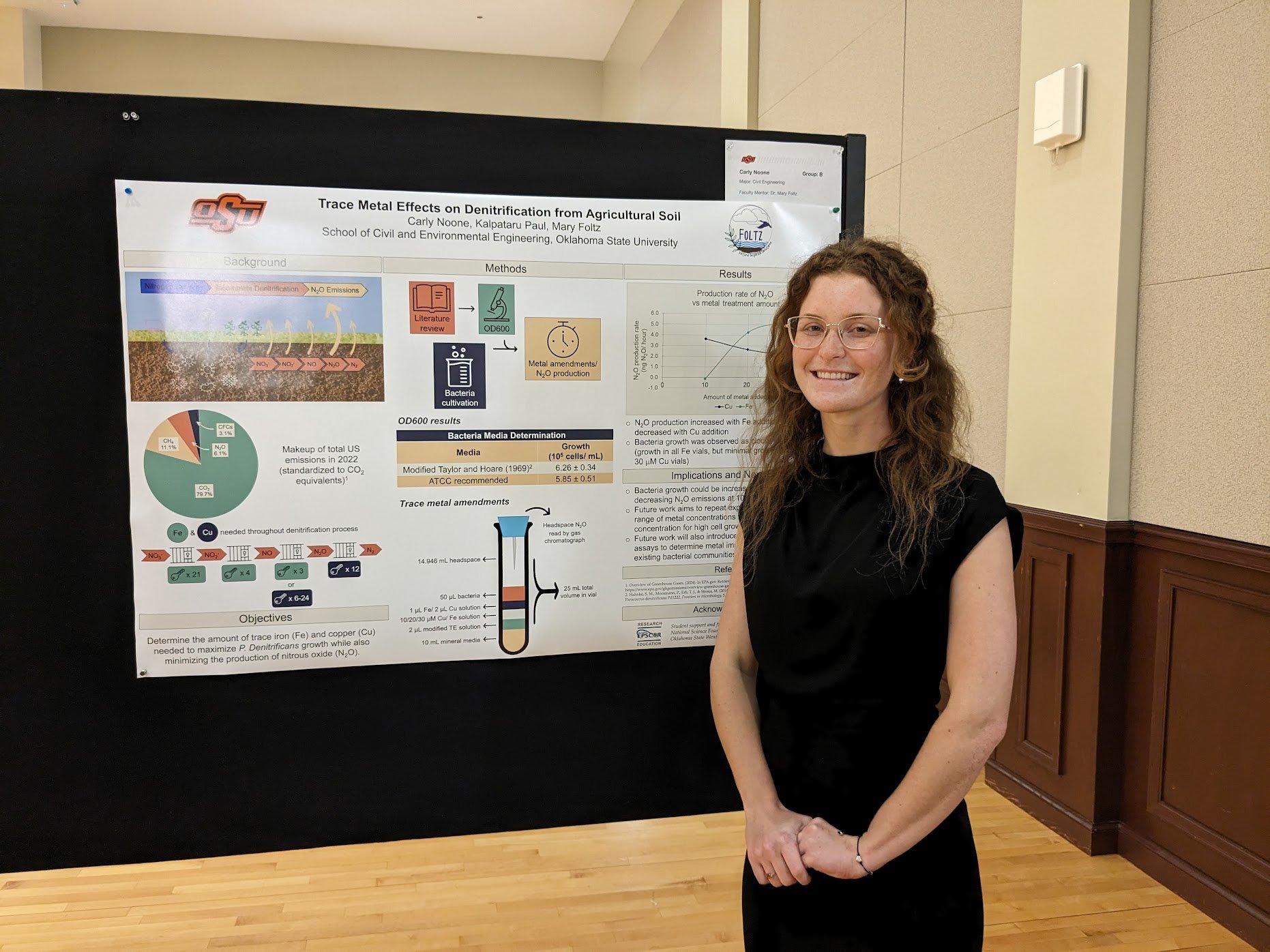
Carly's Wentz Symposium poster 2024
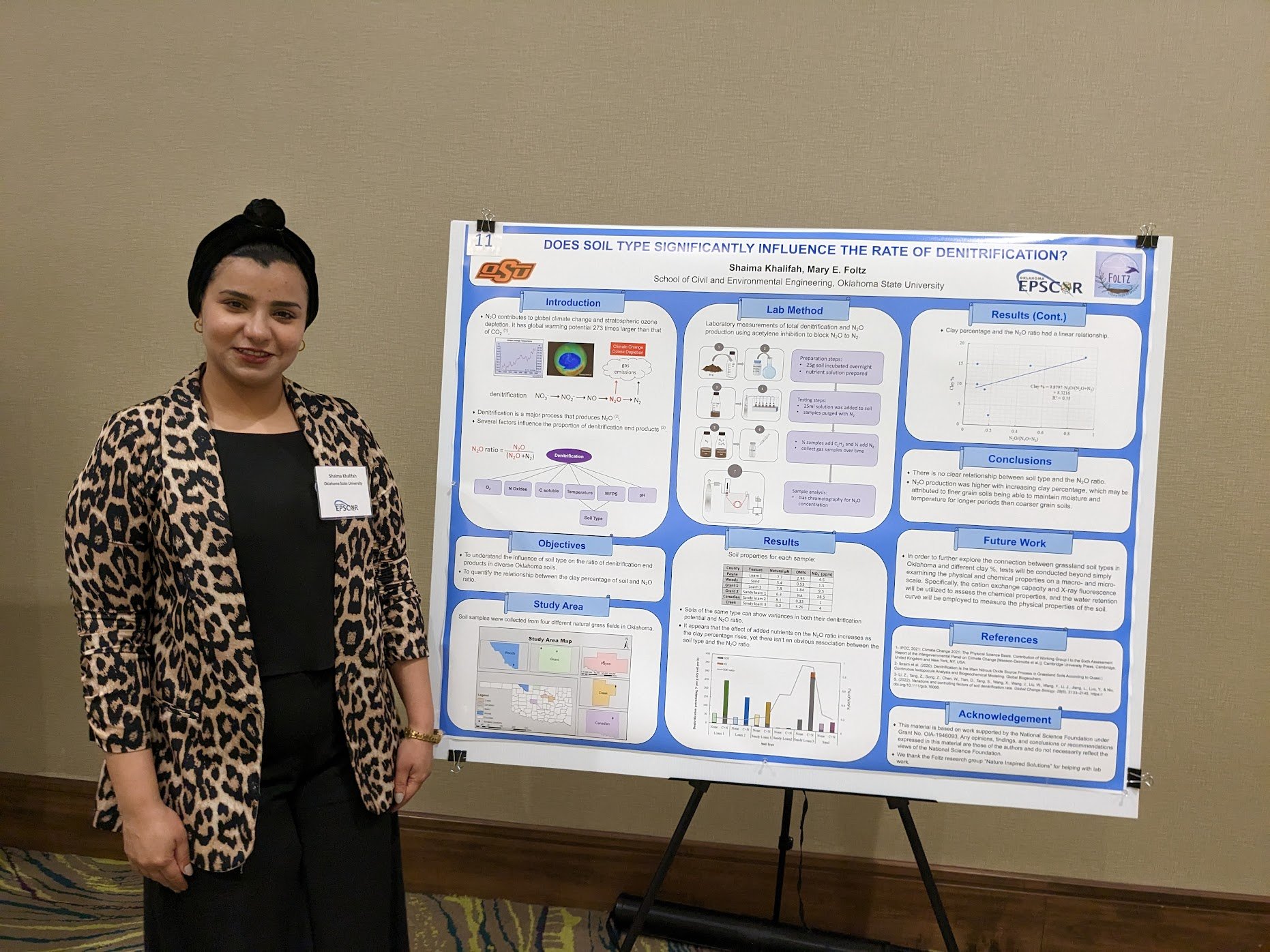
Shaima's poster presentation at EPSCoR 2023
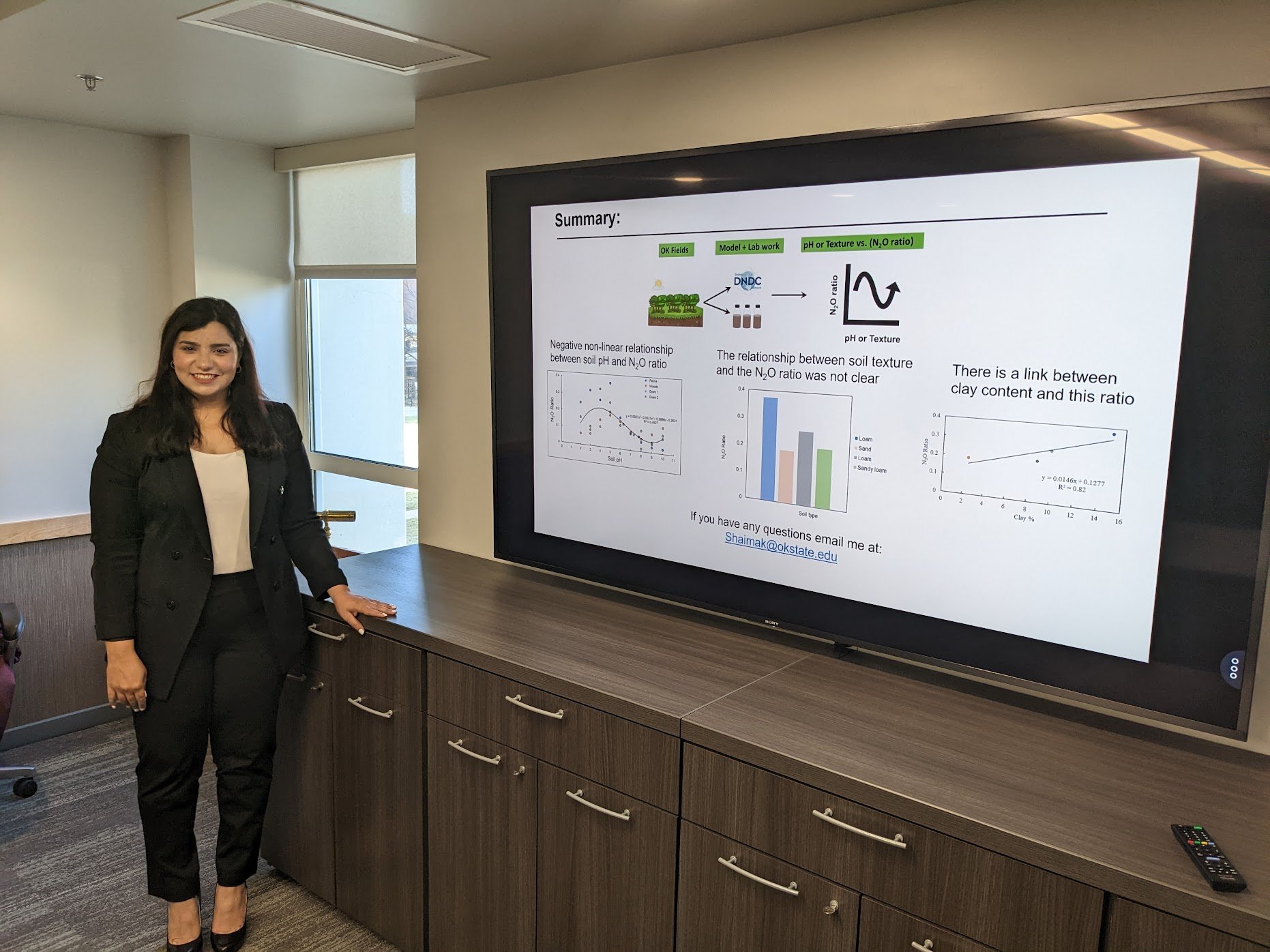
Shaima's MS thesis defense 2022

